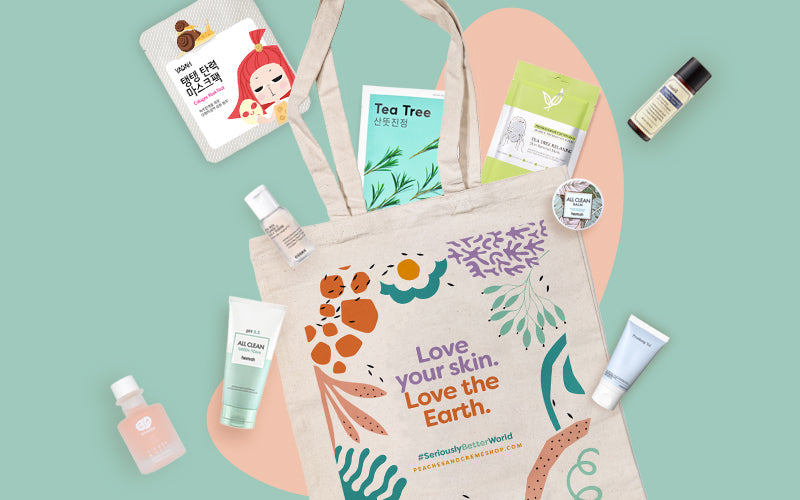How to identify your skin type
Determining your skin type is probably the most important step in starting or building any skincare routine because it helps you understand how to approach your skin care. Once you know what type you are, you can then choose the products to help your skin be the best it can be.
If you're a beginner to Korean skincare, the first thing to understand is that every person’s skin is unique. Your skin type can also change over time and can be influenced by genetics and external factors, so your skin care needs will also change over time.
Skincare (Korean or not) is very personal and all about finding out what works best for you. It’s a continuous process of discovery, and there really isn’t a magic formula to get it right the first time.
How do I know my skin type?
We know sometimes this can be a tricky thing to figure out, particularly when skin can change over time, or even across seasons!
Here are some quick-and-painless steps and guidelines to see the signs and better understand your skin type:
- Wash your face. Remove makeup and wash off the day's oil and dirt with a gentle cleanser so your skin can start fresh.
- Wait two hours.
- Don't apply any products during this time, and let your skin return to its natural state.
- What do you see? Determine your skin type based on your skin’s natural characteristics. See below.
Normal skin type
Normal skin is the easiest. Your skin feels smooth and normal, there are no signs of flaking, or you're not too oily/greasy/shiny. Lucky!!! You can also do skin typing before going to bed and check in the morning (with a blotting paper) if all areas of your face has the same average amount of oil.
Oily skin type
You may have oily skin if your skin looks shiny and may feel slick to the touch, and it oftentimes experience breakouts (Yes, breakouts still happen to adults. Don't worry, trust us, it's not hopeless!)
Sometimes it also feels too greasy to wear moisturiser especially in the summer. You may also have much oiler skin in midday than in the morning (without using any products) and having large pores are also signs that your skin might be the oily type.
Choose skincare products that will balance your skin and help it look smoother. For oily skin, it’s important to choose gel and lightweight formulas, and avoid heavy emollient textures.
Dry skin type
You know you have dry skin if your skin feels tight and dehydrated and may have flaky areas. Your skin's bestie is a moisturiser (and you gotta believe us, your skin will drink them like there's no tomorrow!). Also, gentle cleansers or even just washing with water dries your skin and makes it feel tight after.
Choose skincare products like lotions, moisturisers, and face oils that will nourish skin, repair skin’s critical barrier and prevent moisture loss. Avoid of irritating ingredients.
Combination skin type
Combination skin is a bit trickier. Your skin usually has an oily T-zone (forehead, nose, chin), while your cheek area and everywhere else feels normal to dry. Oily parts may also have enlarged pores, signs of breakouts and blackheads. For this, you'll need to pay attention to the difference in the zones of your face and use a variety of products for different skin types on different areas of your face.
Combination skin types are tricky - as you may have to use skincare on for oily skin types on the areas that are oily, and for dry skin types for the areas that are flaky or dry. Target oily areas with gels and liquidy formulas. Soothe dry areas with light lotions and serums.
Sensitive skin
If products with active ingredients like Vitamin C or retinoids, or even strong fragrances sting when you put them on, your skin might be the sensitive type. Sensitive skin tends to develop redness easily. As such, it is always almost a must to patch test any new product before use and see if your skin will react. Products that have calming and soothing ingredients like Centella, mugwort, oat, heartleaf, chamomile/azulene (to name a few), products that are mild and gentle, and no fragrance work best for reactive/sensitive skin types.
Do you have more than one skin type?
It is possible to have more than one skin type. Combination skin is typically a mix of oily and dry skin. Some can have both dry and sensitive skin or oily and sensitive skin.
Your skin type is not fixed - be mindful
Skin type can change because of many factors: it can change over time, with age, weather, your diet, stress, and environmental stressors.
☝️The production of sebum (natural skin oil) can change throughout our lives. There are medical conditions that can alter how much sebum your sebaceous glands produce.
☝️Your skin needs may change throughout the year or depending on where you are: The season also affects how much sebum our skin produces, with more sebum production in the spring and summer compared to fall and winter. Humid climates tend to contribute to increased sebum synthesis, too. Other environmental factors like UV exposure and low humidity during the wintertime can also dry out the skin.
☝️The levels of each skin type may vary. You could be on the drier side of dry or the normal side of oily. For example, if you have combination skin, your skin type can be a combination-dry or a combination-oily. Every skin is unique, and that's OK.
☝️It is also good to keep in mind that skin type is different than a skin concern. Redness and dehydration, for example, are skin concerns that can appear no matter the skin type.
☝️Any skin type can get breakouts, though they're most common on oily skin.
The key to having good skin is paying attention to it. Use your skin care routine as a way to communicate with your skin, and understand what you need and what makes your skin happy. 😉









Leave a comment